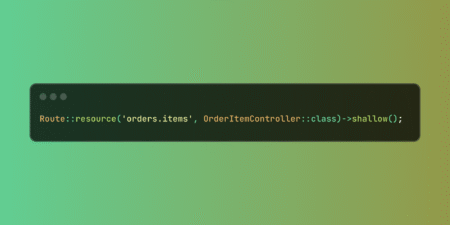
In an AI world dominated by global players like ChatGPT and DeepSeek, a new contender has emerged from India—Xanfi, a generative AI-powered chatbot that speaks more than 100 languages, including all 22 official Indian languages. At a time when most Indian startups are chasing the next big food delivery app or payment gateway, a young entrepreneur has taken a different route—one that prioritizes knowledge accessibility and inclusion over convenience.
Launched recently at IIT Delhi, promoted by entrepreneur Pearl Kapur and developed by Zedgo 365 Technologies Pvt Ltd, Xanfi is a new AI chatbot built with a strong focus on multilingual communication and local relevance, aiming to make generative AI tools more accessible to a wider audience across India.
The launch of Xanfi at one of India’s premier institutions, IIT Delhi, was more than symbolic. It signaled India’s aspiration to lead in building AI solutions that resonate with local cultures and languages while also serving a global audience. Kapur, while introducing Xanfi, put it succinctly: “While the ecosystem is busy building food and grocery delivery apps, we are delivering intelligence, creativity, and knowledge.”
Let’s Understand Xanfi More Closely
Xanfi is a real-time, generative AI assistant capable of answering complex queries, generating written and visual content, and offering insights across diverse areas such as:
- Content creation (blogs, video scripts, captions)
- Market & financial analysis
- Legal & astrological consultations
- Relationship advice
- AI art generation in a distinctive Ghibli-inspired style

What sets Xanfi apart is its strong multilingual capability. It supports over 100 languages, with deep integration of Indian cultural and linguistic contexts—something few global AI models can claim. This means someone in a remote part of India can interact with the chatbot in Maithili, Assamese, or Marathi as seamlessly as someone else using English or Hindi.
Built for India, Ready for the World
As claimed, the key differentiator is the dataset used to train Xanfi. Unlike many AI tools built on Western-centric data, Xanfi claims that it is developed using Indian datasets to enhance its performance on local queries. This gives it an edge in understanding cultural references, regional nuances, and language intricacies that even some of the most popular global platforms often overlook.
While platforms like ChatGPT and Gemini cater to a global audience, they struggle with the depth of Indian language support. Xanfi aims to bridge that gap. In doing so, it addresses a longstanding issue in India’s tech evolution: linguistic exclusion.
Despite being one of the most linguistically diverse nations in the world, AI tools for Indian languages remain woefully underdeveloped.
Another notable aspect is Xanfi’s pricing—or lack thereof. While ChatGPT Plus comes with a monthly fee of around Rs 1650, Xanfi is currently free and offers a wide range of services out of the box. Even its full-featured premium plan, if opted for, is priced at just Rs 299 per month, making it more accessible to students, rural users, and small businesses.
For a country where affordability determines adoption rates, this pricing model could be the catalyst that brings AI to the masses.
Beyond the Hype: Challenges Ahead
That said, it’s still early days. Whether Xanfi can maintain accuracy across such a wide range of domains—from astrology to market analysis—remains to be tested at scale. With powerful incumbents like OpenAI, Google, and Baidu throwing massive resources behind their chatbots, the competition is steep.
Moreover, user retention, data privacy, and regulatory compliance will be critical challenges as the tool gains traction. And though accessibility and multilingualism are Xanfi’s strengths, scalability will depend on how well the tool adapts to the ever-evolving expectations of a diverse user base.
A Shift in the Indian Startup Narrative
Launch of Xanfi comes at a time when India’s AI sector is poised for exponential growth. The country’s artificial intelligence (AI) market is expected to reach a value of USD 7.84 billion in 2025, with projections indicating a compound annual growth rate of over 26% through 2031.
Despite trailing behind the U.S. in raw numbers, India’s investments in AI are significant—Rs 5,000 crore allocated in 2024 alone to advance AI research, education, and infrastructure. Indian cities like Bengaluru, Hyderabad, and Delhi are becoming hubs for AI talent and startups. Meanwhile, Indian government initiatives like NITI Aayog’s National AI Strategy are aimed at integrating AI into healthcare, education, and smart city development, while simultaneously advocating for ethical standards in its use.
Yet, the enthusiasm around AI is tempered by persistent challenges. India still lacks a comprehensive data protection law, with the Personal Data Protection Bill remaining under discussion as of 2024.
This regulatory gap raises serious concerns about how AI systems collect, process, and store user data. Moreover, despite India’s vast IT workforce, the country faces a shortage of around 200,000 AI professionals, especially in specialized fields like deep learning and natural language processing. Only 20% of IT graduates currently receive formal training in AI, leaving a substantial skills gap that hinders scalable innovation.
It’s within this complex context that Xanfi enters the scene—not as a mere competitor to existing global AI platforms, but as a product of India’s evolving priorities. By doing so, it challenges not just technical conventions, but also the linguistic and cultural hierarchies embedded in AI development today.
Importantly, Xanfi is free to use, at least for now, making advanced AI capabilities accessible to people far beyond India’s urban elite or English-speaking population. While competitors like ChatGPT or Gemini cater largely to global audiences with premium models and English-first logic, Xanfi builds from the ground up with inclusivity as a design principle, not an afterthought.
This isn’t just about feature comparison or pricing models. Xanfi’s emergence poses a broader, more philosophical question to India’s tech sector: Can Indian innovation evolve from solving for convenience to solving for capacity? Can we move beyond the obsession with “faster delivery” to offering tools that genuinely empower people intellectually, economically, and creatively?
For a country where nearly 80% of the population now uses the internet, but where many still lack access to advanced educational or productivity tools, this kind of shift could be transformational. If AI is going to shape the future of work, education, and communication, then tools like Xanfi could help ensure that future isn’t limited to the urban, English-speaking few.
In this way, India’s newly launched chatbot does not just reflect a product launch—it represents a growing aspiration within India’s startup ecosystem to think bigger, deeper, and more inclusively.
In just five days, ChatGPT reached one million users. Whether Xanfi will follow in those footsteps remains to be seen, but it has already sparked a meaningful conversation: Can India build not just for India, but for the world?
Pearl Kapur seems to believe it can. And with Xanfi, he’s betting not on convenience, but on intelligence.
Source: Read More



